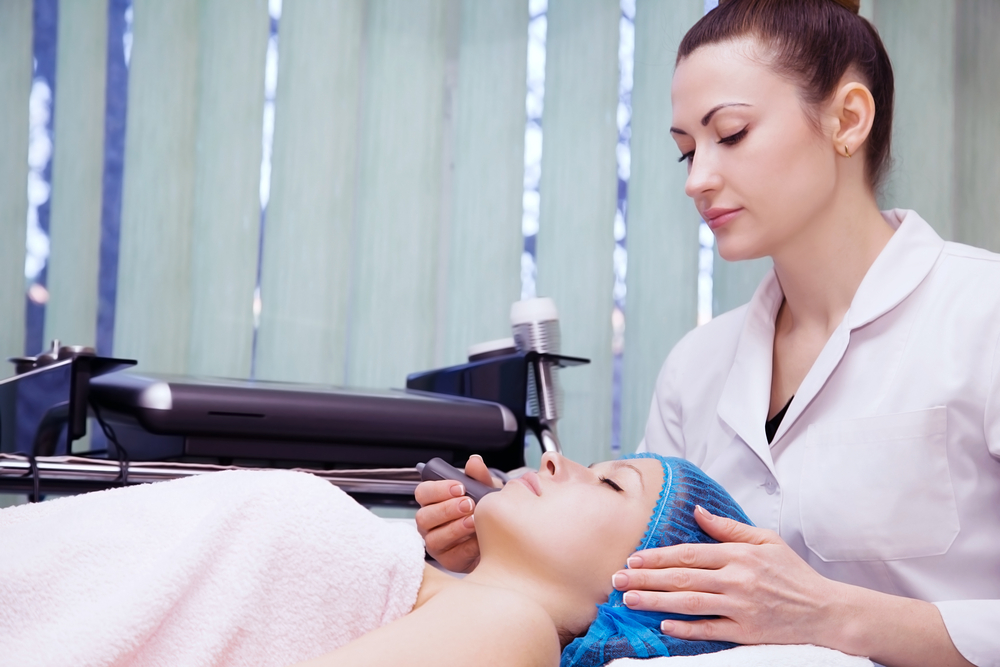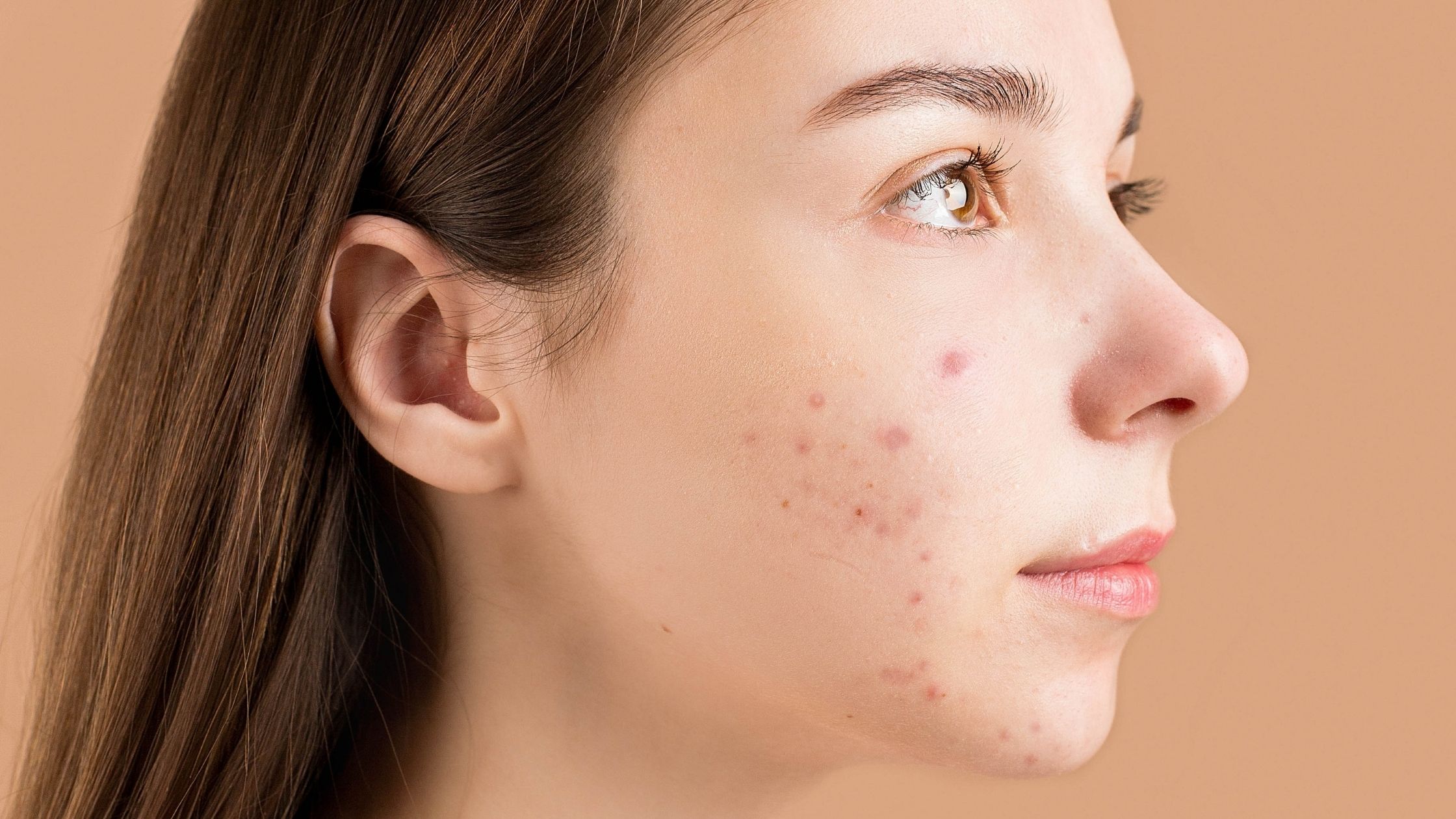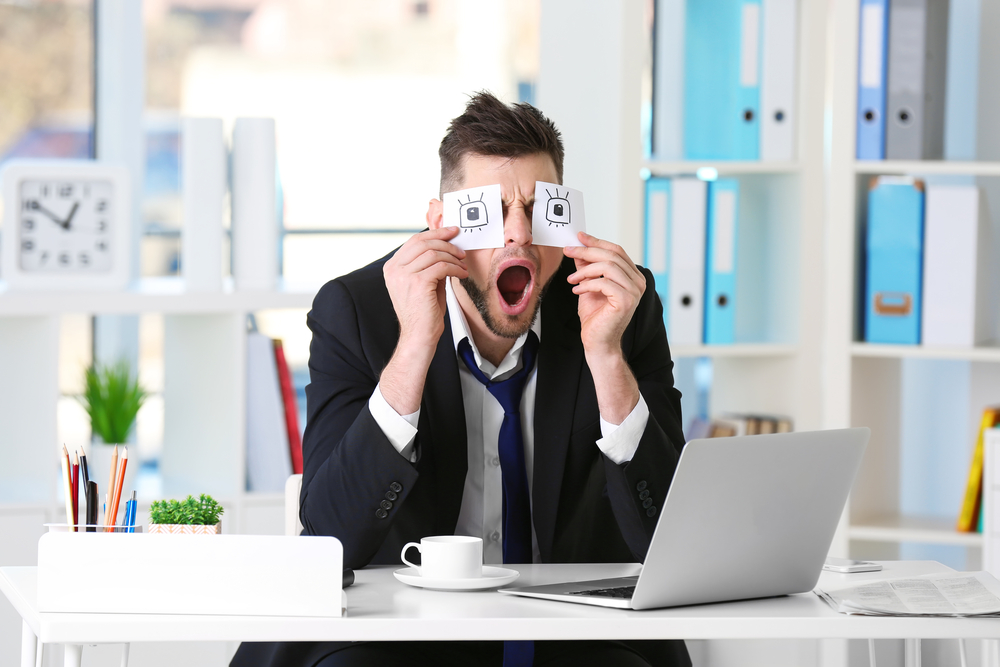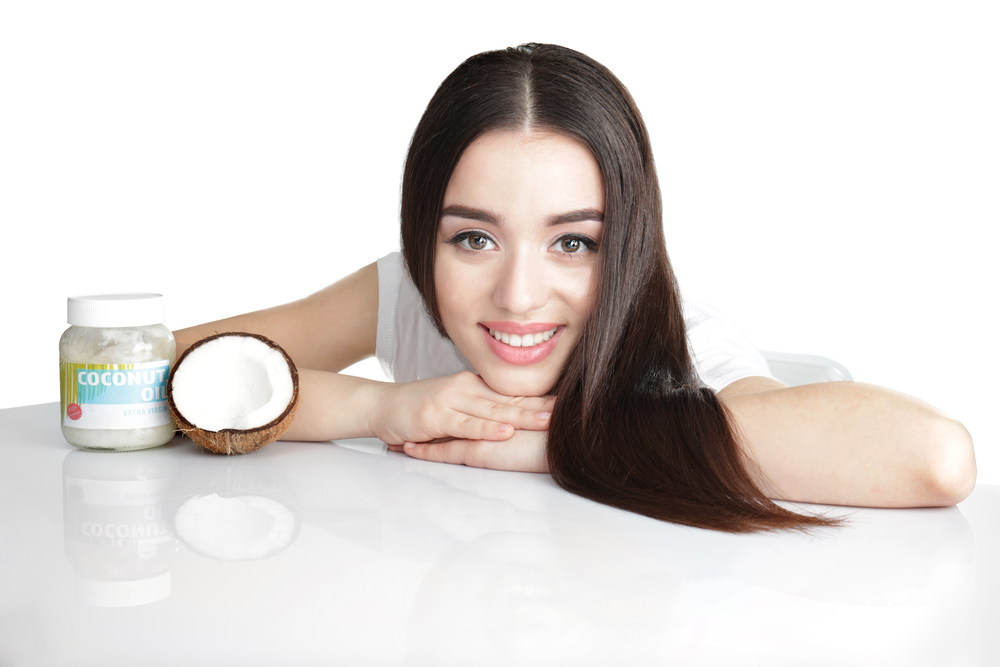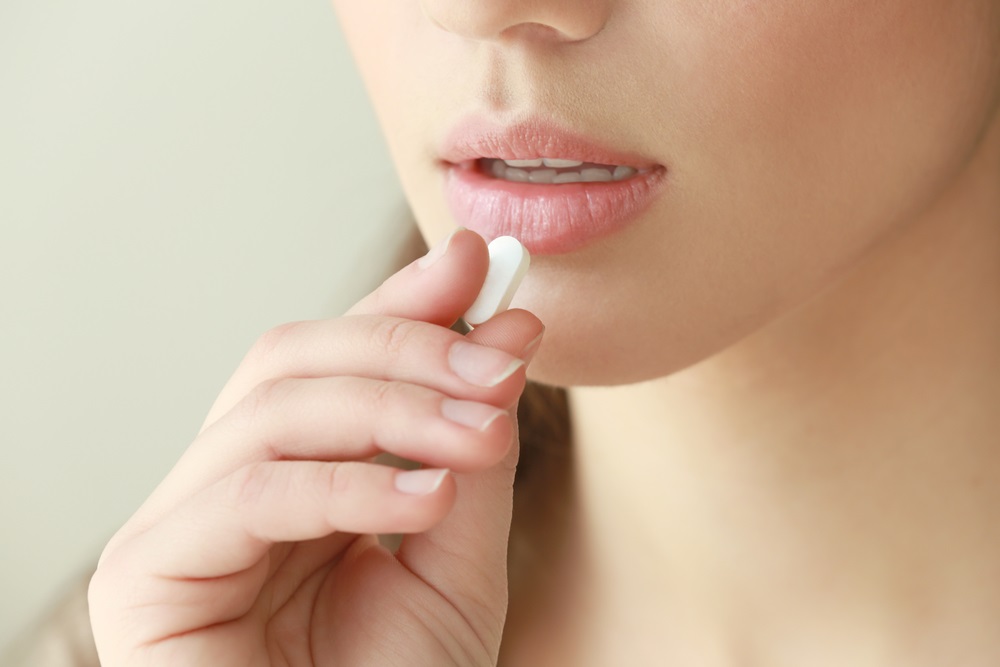This issue is brought to you by Dina MD Clinic
- Photofacials use light-based technologies to treat skin blemishes and pigmentation issues.
- As a safer alternative to older treatments with the added bonus of little to no downtime, photofacials have become quite popular.
- Photofacials can treat any part of the body other than the eyelids and the area directly above the eyes.
What is a Photofacial?
Photofacials are treatments that use different types of light emitting devices to treat skin discoloration and reduce the appearance of blemishes.
This procedure is ideal for those looking to treat a variety of common skin issues including wrinkles, large pores, and acne scars. It is important to note however that those with tans or naturally darker skin tones may not be eligible for certain photofacials treatments as the procedure may cause skin discoloration.
There are two types of photofacial — intense pulsed light (IPL) photofacials and light emitting diode (LED) photofacials — and each has its benefits and drawbacks. The procedure takes between 30 and 90 minutes depending on the type of photofacial, the treated area, and the practitioner’s experience.
While some redness and swelling may occur, these should subside within 24 hours and the procedure requires little to no downtime. Results are gradual with improvements to the skin beginning to appear in the days and weeks following treatment.
What are the different types of photofacial procedures?
There are a variety of photofacial procedures, but the two most common incorporate intense pulsed light (IPL) and light emitting diode (LED). The names refer to the nature of the light being used in the procedure.
IPL photofacials, also known as Pulsed Light Therapy, involve a handheld device that emits pulses of broad spectrum light through direct contact with the skin. It acts on the deeper layers of skin, making it ideal for treating broken capillaries, sun damage, and other impurities.
While relatively simple, the procedure should still always be performed by a medical professional, ideally a board-certified plastic surgeon, in order to get the very best results, and to minimize any potential risks.
LED photofacials involve handheld devices or lamps that emit various colors of LED light. The effects of this procedure are believed to be influenced by the color of the light. For example, blue light treats acne by killing acne-causing bacteria, while red light stimulates collagen production which in turn treats fine lines and wrinkles.
Generally speaking, LED photofacials act on the epidermis, making the procedure the preferred photofacial option for treating surface blemishes like acne.
LED photofacials are so simple that they’re not only performed in licensed medical facilities but, also, in spas and occasionally even at home. That said, safety needs to be of paramount concern with any serious cosmetic procedure. Working with a board-certified plastic surgeon means working with a highly qualified professional who has ample experience assuring their patients’ safety during both simple and complex procedures.
How do photofacials work?
Both IPL and LED photofacials involve light being absorbed into the skin. The more intense nature of the IPL photofacial’s light pulses allows this light to be absorbed more deeply.
IPL photofacial light is soaked up by the hemoglobin (red blood cells) and melanin (pigmentation) in the skin, intentionally damaging these areas. The damaged melanin breaks up and is absorbed by the skin, decreasing its appearance on the skin’s surface. The damaged hemoglobin stimulates blood flow, causing the melanin to be absorbed more efficiently.
LED photofacials work differently depending on the light color in question. Green light works similarly to IPL photofacials, breaking up melanin for easier absorption. Other colors, like the aforementioned blue and red light, act on different aspects of the skin.
What are photofacials used for?
Generally speaking, photofacials are used to treat skin blemishes and pigmentation issues. However, there are several specific conditions that fall under these categories. Both IPL and certain LED photofacial treatments can be used to treat the following:
- Broken capillaries (blood vessels)
- Rosacea
- Sun damage (sun spots)
- Hyperpigmentation
- Spider veins
- Freckles
- Fine lines
IPL photofacials are typically more effective at treating the above conditions, while LED photofacials are more effective for acne. According to recent studies, IPL treatments can also effectively treat port wine stains, vascular lesions, and even remove unwanted hair.
What is getting a photofacial like?
LED photofacials tend to be rather straightforward. You spend a set amount of time either facing an LED lamp or holding a handheld device to your face. The process may vary somewhat depending on the device being used, but it always involves wearing protective eyewear and sitting very still.
IPL laser photofacials, on the other hand, are slightly more complex. First, the physician or nurse will apply a cool gel to your face and supply you with dark glasses to protect your eyes from the light.
Once you’ve been prepped, the person administering your treatment will take a hand-piece with a cold smooth surface and run it along your skin as it pulses light. Afterward, you’ll be provided with moisturizer and a cold pack to prevent swelling.
How long do photofacials take?
IPL photofacials are performed in a series, with each treatment lasting from approximately 20 minutes to an hour, depending on the amount of skin being treated. Typically, patients receive between three and six treatments spaced roughly one month apart.
LED photofacials are also performed in a series. Typically, individuals undergo as few as five treatments, but as many as a dozen may be required for optimal results. The length of each treatment varies widely depending on the tool being used and the volume of skin being treated.
How do I prepare for a treatment?
For starters, with IPL photofacials you need to be tan-free. Tans can prevent the machine from accurately detecting the specific blemishes that you want addressed, and put you at greater risk of being burned. You also need to avoid aspirin, ibuprofen, anticoagulants, alcohol, and anything else that thins the blood. Additionally, be sure to notify your doctor if you’re taking antibiotics or any supplements.
LED photofacials have less strict requirements. Simply make sure your face is clean and dry prior to each treatment.
What parts of my body can I have treated?
Most people get photofacials to treat their face, neck, shoulders, back, and hands. Essentially areas that are frequently exposed in public. However, photofacial treatments can be performed on any part of the body except the eyelids and the area just above them. Photofacials have the potential to be very bad for eyes, so treating areas close to this region is heavily discouraged.
Do photofacials hurt?
There is no pain whatsoever with LED photofacials. They’re simply too low impact to cause any discomfort.
For their part, IPL photofacials can be mildly painful. Some patients have likened the brief stinging pain of the pulsating light to a rubber band flicking them in the face. Patients have also reported feeling like they have a mild sunburn in the treated area for several days after treatment.
How will my skin look after a treatment?
After a single treatment, your skin may feel smoother and appear to have a more evenly distributed tone. However, results only appear gradually and multiple treatments will be required for them to become truly dramatic.
How long does it take to recover from a photofacial?
Whether you’re getting an IPL or an LED photofacial, there’s no real recovery time to speak of. With IPL photofacials, there may be some mild side effects immediately after the procedure that can take up to a week to diminish. Nevertheless, expect to resume normal activities immediately after treatment, including applying your usual facial creams and makeup.
What are the side effects?
As they’re so low impact, LED photofacials have no significant side effects. IPL photofacials generally do come with some mild ones. Most show up immediately after the procedure and will persist anywhere from a few hours to one week.
- Mild swelling – You’ll be given a cold or ice pack to prevent this, but it may develop regardless.
- Redness – This is fairly common. It’s a sign of irritation and generally goes away after a few hours.
- Brown spots – If you underwent the procedure to treat dark spots and are suddenly faced with darker ones, don’t fret. This is normal. The dark spots may last for up to a week but will then fade.
- Crusting – Some of the dark spots you’ve treated will grow hard and begin to flake. This is normal and temporary.
- Bruising – This side effect is fairly uncommon and mild when it does occur.
- Tiny blisters – Reminiscent of sun blisters, they too fade with time.
Remember that it will take several weeks (and several treatments) before you start seeing truly significant results.
Is there any risk of serious complications?
Complications, as opposed to side effects, are not part of the normal healing process. IPL photofacials can be accompanied by complications, but they’re rare and typically the result of a poorly trained individual administering the procedure.
- Blistering – Yes, we’ve already mentioned blistering, but blistering as an actual complication, and not a predictable side effect, can be extensive and painful.
- Burns – This is the most common complication. You may not feel heat while undergoing the procedure, but the light is powerful and can burn your skin when not handled properly.
- Scabbing – Not to be confused with flaking. Flaking occurs when melanin hardens, whereas with scabs it means the epidermis has been damaged, something that shouldn’t happen with IPL photofacials.
- Hyperpigmentation – This is when patches of skin become darker than the surrounding skin. It should not be confused with dark spots getting temporarily darker, which is a normal and temporary side effect.
- Hypopigmentation – This occurs when patches of skin become lighter than the surrounding skin, a complication which tends to be much more common among people with darker skin tones. Those with dark skin tones are not typically considered good candidates for this procedure specifically due to this issue.
It is again worth noting that, even thought the procedure may seem harmless, photofacials are a serious cosmetic procedure. It is important find a qualified facility and practitioner for your IPL photofacial.
How long do the results last?
This is a tricky question. With so many factors acting on the skin, like sun exposure, age, and genetics, it’s difficult to guarantee any specific amount of time.
Typically, however, the results of an IPL photofacial will be apparent for six months to a year. Dermatologists recommend maintenance treatments every six to 12 months to help prolong results. According to a 2013 study on the anti-aging effects of IPL photofacials, two to three treatments a year are enough to develop and maintain younger looking skin with renewed collagen growth.
The results of LED photofacials are less certain. After the initial series of treatments, maintenance sessions may be required every couple of months.
What can I do to prolong results?
Whether you’re looking to IPL or LED photofacials, the answer is simple: Avoid things that damage your skin. That means limiting direct exposure to the sun, wearing sunscreen, and taking optimal care of your skin with moisturizers and face washings.
Of course, keeping up with your scheduled maintenance treatments won’t hurt either.
How much do photofacials cost?
A single IPL photofacial treatment typically ranges from $400 – $600. If you receive four sessions as part of your initial treatment, this sets the price of treatment between $1,600 and $2,400. This does not include future maintenance sessions.
LED photofacials are more complicated when it comes to pricing. An LED session at a spa or clinic can range from as little as $30 to as much as $200, depending on the style of treatment. Prices for at-home devices are equally as varied, ranging from roughly $170 for a handheld device to $350 for a light panel.
If there’s something you’d like to change about your skin, thanks to photofacials you can now consider using light for the job. With only the most minor side effects and little to no recovery time required, photofacials make the most sense for people who want a little boost to their complexions without having to take time off from work.
At-Home IPL Photofacials: The Light-Based Beauty Trend
Intense Pulsed Light (IPL) photofacial treatments use high-intensity bursts of a wide spectrum of light used to treat a variety of skin conditions. IPL has many applications, including hair removal, but it’s recently gained ground as a photofacial treatment. As the name suggests, photofacials use light to influence the skin on a molecular level, rejuvenating it without the need for surgery or downtime.
Due to the wide spectrum of light that IPL employs, these photofacials can treat a variety of skin conditions, including fine lines, wrinkles, age spots, birthmarks, spider veins, and rosacea.
IPL photofacials can costs between $400 and $600 per session when done professionally, and multiple sessions may be necessary depending on how many problems you’re trying to address.
At-home IPL photofacial devices have begun to hit the market, offering a cheaper, DIY alternative to professional sessions. We’ve outlined some things to consider before deciding whether you’re a good candidate for at-home IPL photofacials.
We’ve also explored the devices currently on the market to help with your purchase, should you decide it’s right for you.
Am I a good candidate for at-home treatments?
Generally speaking, IPL photofacials can’t treat deep lines and sagging facial muscles. However, it can be beneficial for those hoping to address more superficial skin concerns, such as fine lines and pigmentation issues.
The ideal candidate has a light skin tone, is untanned, and has some skin elasticity. Unfortunately, IPL photofacials are not a great choice for those with a tan or a naturally dark skin tone, as these treatments can cause permanent skin pigmentation changes through hyper- or hypo-pigmentation. This happens because there’s not enough contrast between the unwanted skin markings (such as age spots), and the skin itself.
If you’re taking Accutane for severe acne, you should reconsider getting a photofacial. Accutane makes the skin extremely sensitive to all light (not just IPL). Other conditions that might make you a poor candidate for IPL photofacials include lupus, a history of keloid scars, porphyria, and extreme light sensitivity.
As always, consult a medical professional before trying an IPL photofacial, either at home or in the doctor’s office.
Which photofacial device is right for me?
While IPL can be used to treat all sorts of skin and hair conditions, most at-home IPL devices are specifically designed for laser hair removal and not for photofacials.
There are plenty of other photofacial products available for purchase, but most of them use LED (light emitting diode) technology, not IPL. LED photofacials definitely have benefits, but they usually employ only one wavelength of light — for example, blue light to treat acne or red light to treat wrinkles, but not both — instead of the full spectrum, which is what distinguishes IPL photofacials from other light-based treatments.
Some manufacturers’ language isn’t always clear about the difference between IPL and LED, so look for the wide spectrum of light (multiple colors) and a wide range of beauty applications when shopping for an at-home IPL device.
When treating yourself with photofacial products at home, use caution. Follow the included instructions, and wear goggles to protect your eyes.
There aren’t as many consumer products available for IPL photofacials as there are for other at-home treatments, but there are a few devices currently on the market — and more will surely become available as photofacials continues to grow in popularity.
We did the research, and identified the most popular options for at-home IPL photofacials here.
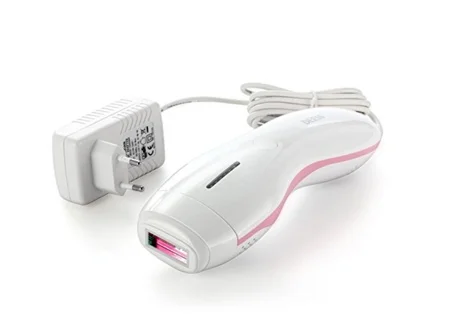
DEESS IPL Photon Skin Rejuvenation
This device uses IPL to encourage fibroblasts to produce new collagen and elastic fiber, which in turn improves skin’s elasticity and helps fight signs of aging. The warmth from the light also encourages blood circulation, which helps to keep you looking youthful and radiant.
Overall, the device can help reduce wrinkles, lift skin, shrink pores, and otherwise rejuvenate the face over time. Five different levels of light intensity allow you to adjust the treatment as needed.
It can be purchased with two extra attachments besides the skin rejuvenation treatment: one for hair removal and another for reducing acne and pimples. Each of the lamps provides 350,000 flashes before it runs out. If you just want the skin rejuvenation treatment, you can buy the standalone device, which is slightly cheaper. If you want to use all three attachments, it’s a better deal to buy everything together than to buy the extra attachments separately at a later date.
To rejuvenate the skin, DEESS recommends a minimum of ten treatments, with at least one treatment weekly. If you’re simply looking to maintain results or prevent signs of aging, you can do one treatment every one to two weeks.
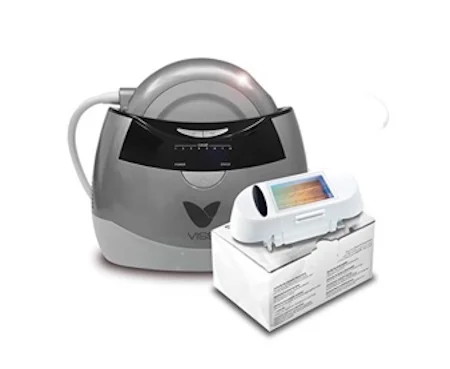
VISS Advanced At Home IPL Skin Rejuvenation System
As the name suggests, the VISS device is designed to mimic the design of professional machines, although it offers a lower power level than photofacials you’d experience at your doctor’s office.
There are three levels of intensity: low level (1-3), which offers 16-19 Joules of energy; middle level (4-6), which offers 20-22 Joules of energy; and high level (7-8), which offers 23-25 Joules of energy. The number of flashes that a cartridge will last depends on the power setting: 30,000 flashes at low level, 15,000 flashes at mid level, and 8,000 flashes at high level. Once a cartridge is exhausted, you can simply pop it out and replace it with a new one.
The base of the unit stays on your counter, while the actual IPL device nestles in the top to charge. When in use, the IPL device connects to the base by a cord. While the IPL device is small, this chord prevents it from being particularly portable.
The cartridge provides a relatively large treatment area of roughly 1 inch by 0.75 inches (3 cm by 2 cm). This kit also comes with protective goggles to guard your eyes, and a skin sensor that helps to ensure that you won’t accidentally zap something you didn’t intend to.
At nearly $500, the VISS isn’t a small investment, but it is the closest to a professional IPL photofacial machine for at-home use available right now.
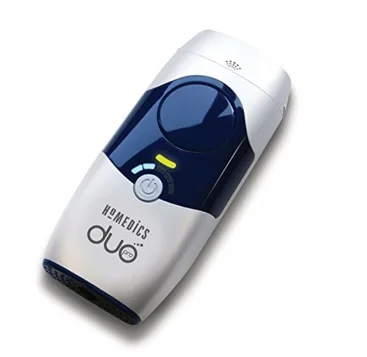
HoMedics IPL and Skin Rejuvenation Hair Remover
Like the DEESS product, the HoMedics IPL device comes with three attachments — one for facial hair removal, one for body hair removal, and one for skin rejuvenating photofacials — and each cartridges lasts up to 30,000 flashes.
The kit also comes with goggles to protect your eyes during treatment. With large buttons and a simple light display, the device is easy to use, though it’s not cordless, so you’ll have to be near a power outlet to use it.
It only takes a few minutes to treat your entire face or neck, making this device an easy addition to your beauty routine. HoMedics recommends treating your face every day for a week to start, then transition to using it as needed.
As with any at-home IPL photofacial product, it will take time to see results. Consistent use of the HoMedics Skin Rejuvenator is key to improving your skin.
Should you buy one?
IPL’s wide spectrum of light allows the technology to treat an equally wide array of skin and hair conditions, from hair removal to hyperpigmentation. Patients looking to treat a wide variety of concerns with one convenient device should consider investing in an at-home IPL photofacial device or look into getting the procedure done professionally.
Remember, at-home treatments simply can’t match the power of professional treatments due to safety concerns. This means that at-home treatment will take more time to produce results.
Bear in mind that not everyone is a good candidate for IPL photofacials, and that the procedure can’t address certain conditions that go beyond the skin, such as droopy muscles.
>>If you think that you might need a professional IPL photofacial, meet our medical review team to get more insights.





